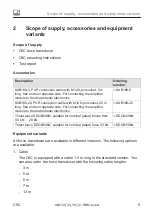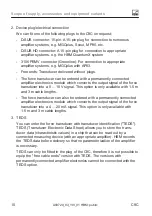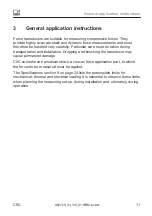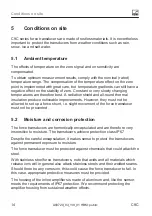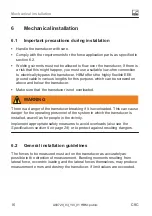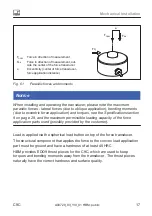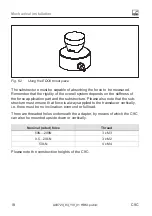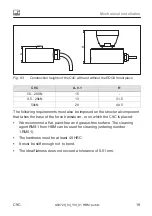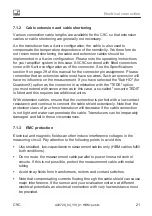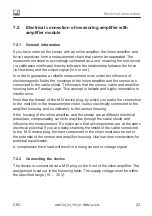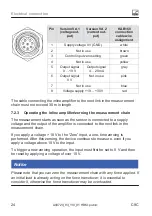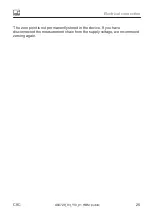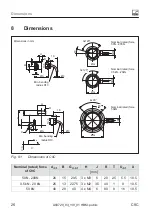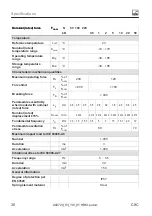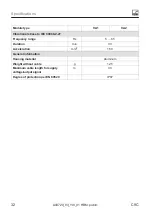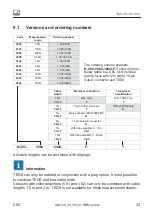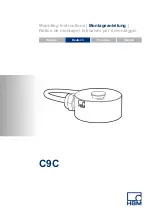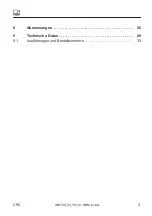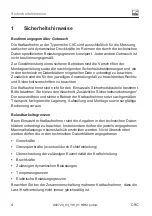
Electrical connection
C9C
A03729_03_YI0_01
HBM: public
23
7.2
Electrical connection of measuring amplifier with
amplifier module
7.2.1
General information
If you have ordered the sensor with an inline amplifier, the inline amplifier and
force transducer form a measurement chain that cannot be separated. The
measurement chain is accordingly calibrated as a unit, meaning the test record
(or calibration certificate) directly indicates the relationship between the force
(in Newtons) and the output signal (in V or mA).
In order to guarantee a reliable measurement even under the influence of
electromagnetic fields, the housings of the inline amplifier and the sensor are
connected to the cable shield. This means that the sensor, cable and amplifier
housing form a Faraday cage. This concept is failsafe and highly insensitive to
interference.
Note that the thread of the M12 device plug, by which you make the connection
to the next link in the measurement chain, is also electrically connected to the
amplifier housing, and so ultimately to the sensor housing.
If the housing of the inline amplifier and the sensor are at different electrical
potentials, compensating currents may flow through the cable shield and
influence the measurement. So make sure that all components are at the same
electrical potential. If you are daisy-chaining the shield of the cable connected
to the M12 device plug, the next component in the chain must also be set to
the potential of the sensor and amplifier housing. Use low-ohm connections for
potential equalization.
A compressive force load will result in a rising current or voltage signal.
7.2.2
Connecting the device
The device is connected via a M12 plug on the front of the inline amplifier. The
assignment is set out in the following table. The supply voltage must be within
the specified range (19 ... 30 V).

